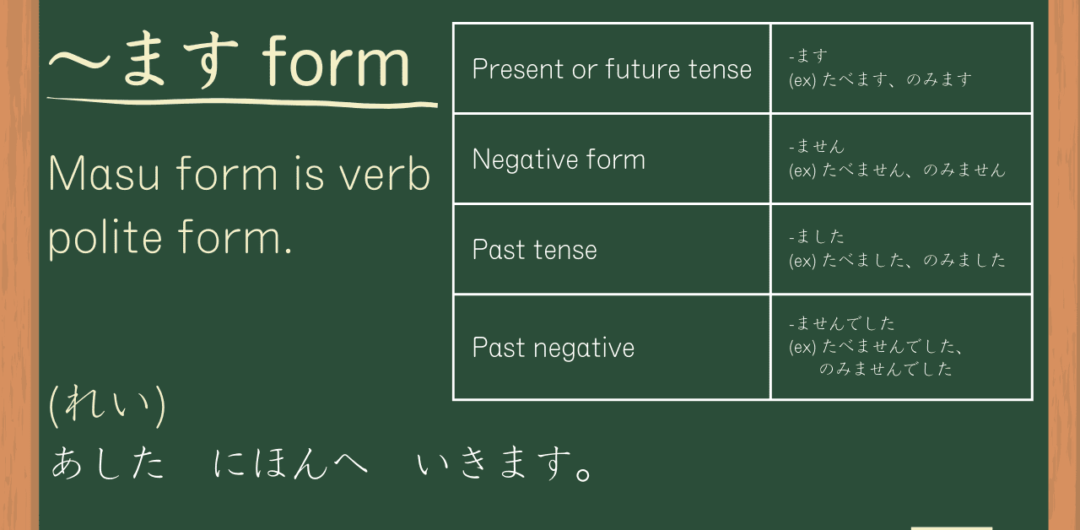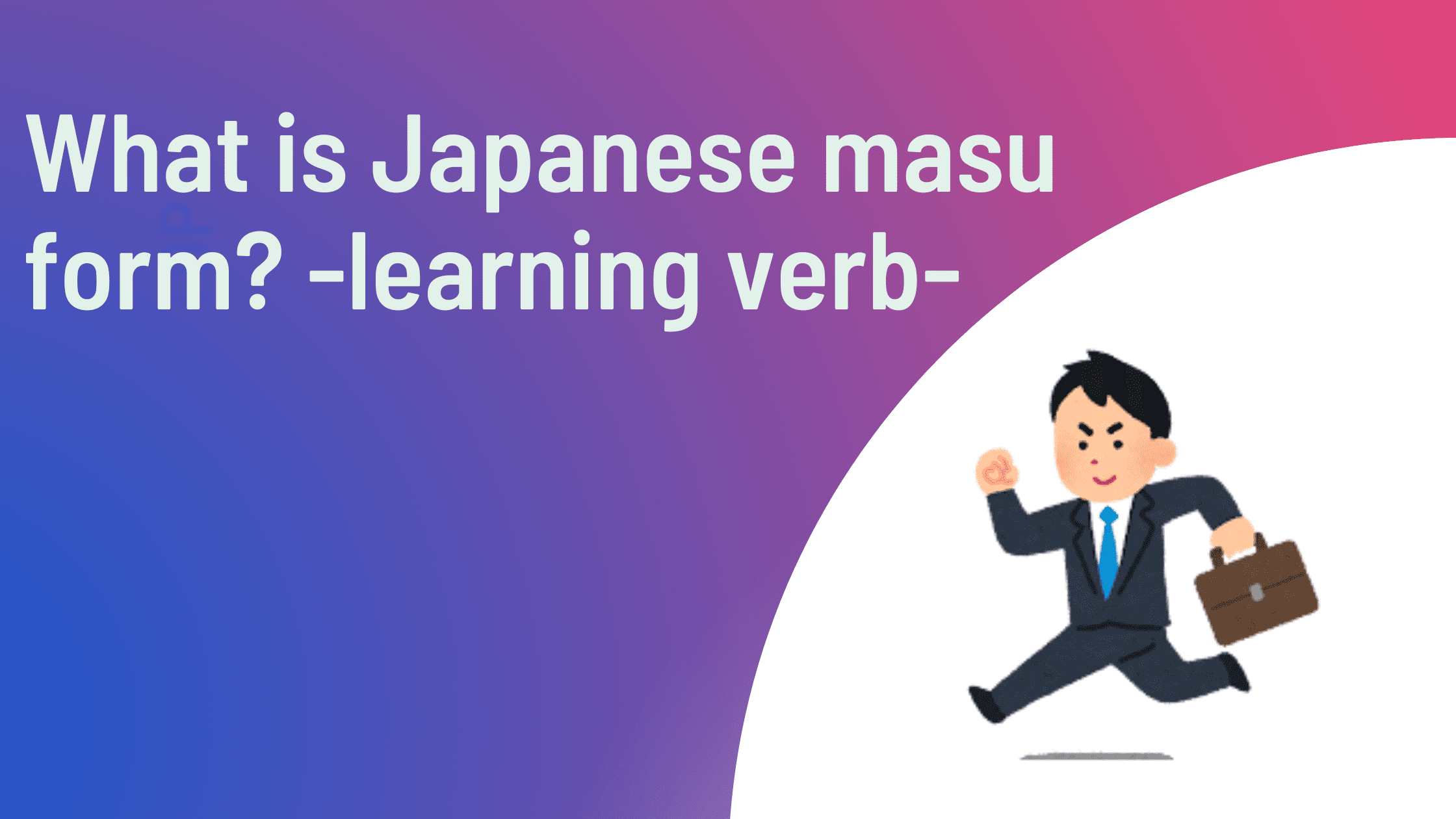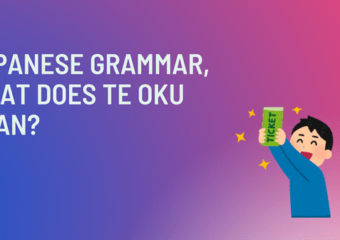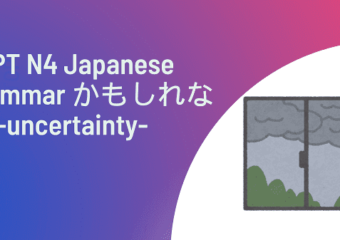When you learn Japanese verbs, you will see -ます with verbs.
ます form is a very basic conjugation type of a verb, but what is masu form?
When and how can we use it?
I will explain what masu form is in this article.
I have been teaching Japanese to beginners for three years, so when you finish reading this article, you will understand what masu form is.
*Are you looking for a place to practice Japanese?
Youtonihongo is for you.
You may receive one free 30-minute trial lesson.

The free trial class online
We offer online classes and in person classes
what is masu form
Masu form is the polite form for verbs.
desu is for nouns and adjectives, and masu is for verbs.
おおきいです
たべます
When you learn Japanese via a textbook, you will learn masu form first because masu form’s conjugation is more simple than plain form.
If you want to learn verb conjugation, please read this article.
Japanese verb conjugation rules with chart
This is masu forms conjugation.
| Present or future tense | -ます (ex) たべます、のみます |
| Negative form | -ません (ex) たべません、のみません |
| Past tense | -ました (ex) たべました、のみました |
| Past negative | -ませんでした (ex) たべませんでした、のみませんでした |
You will need to memorize some basic vocabulary.
| たべます | Eat |
| のみます | Drink |
| みます | See, Look, Watch |
| はたらきます | Work |
| やすみます | Rest, Take a break |
| おきます | Wake up |
| ねます | Go to bed |
You can learn more vocabulary with me.
Let’s see some examples.
Japanese:
あした にほんへ いきます。
English:
I’m going to Japan tomorrow.
Japanese:
まいにち こうえんを はしります。
English:
I run at a park everyday.
Japanese:
きのう 10じに ねました。
English:
I went to bed at 10.
Conclusion

Masu form is the polite form for verbs.
When you learn Japanese via a textbook, you will learn masu form first because masu form’s conjugation is more simple than plain form.
Practice
Please chage to negative form or past tense.
(ex1) まいにち 7じに (おきます→おきません)。
(ex2) きのう 11じに (ねます→ねました)。
1.わたしは おさけを (のみます→ )。
2.にちようびは (はたらきます→ )。
3.せんしゅう ピクニックへ (いきます→ )。
4.わたしは きのう ラーメンを(たべます→ )。
5.あしたは べんきょう (します→ )。
Answer
1.わたしは おさけを (のみます→のみません)。
2.にちようびは (はたらきます→はたらきません)。
3.せんしゅう ピクニックへ (いきます→いきました)。
4.わたしは きのう ラーメンを(たべます→たべました)。
5.あしたは べんきょう (します→しません)。
If you would like to practice conjugation in conversation, please let me know.
I teach Japanese in person or online.
You will have chances to use Japanese in my class.
↓Please feel free contact me.
↓You can also learn Japanese on my Instagram.

The free trial class online
We offer online classes and in person classes



